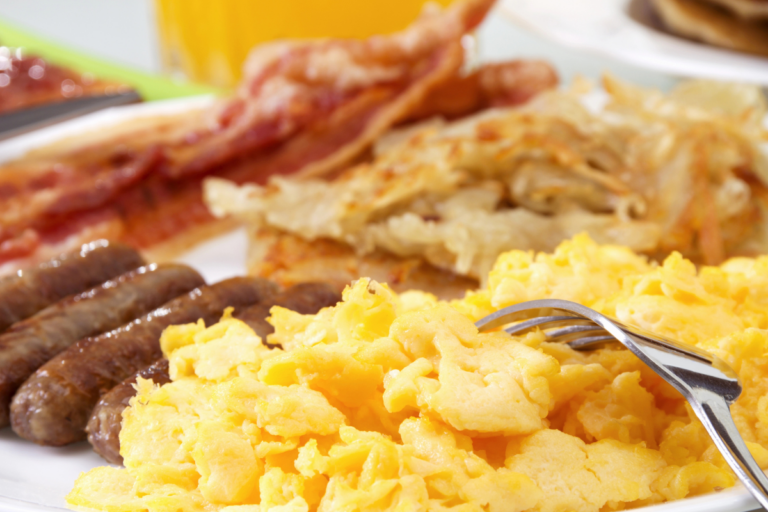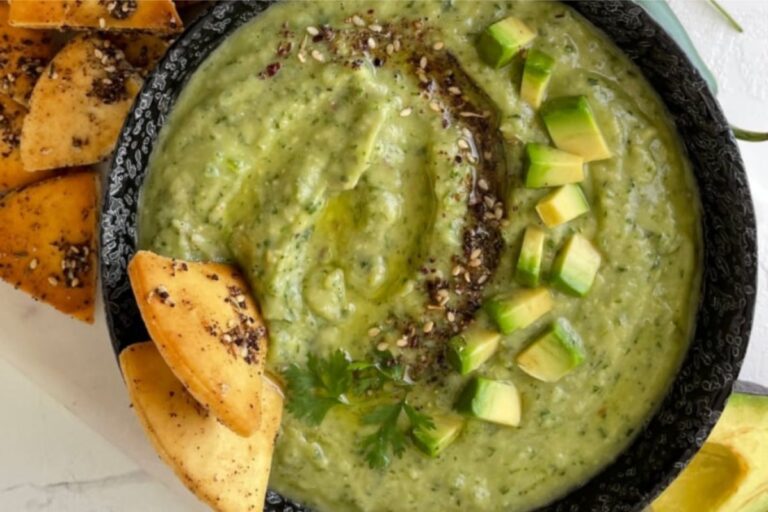15 Foods with Cholesterol: Healthy Choices and Ones to Limit
Cholesterol plays a crucial role in our body, but not all sources of cholesterol are created equal. Some foods are rich in healthy cholesterol that supports your body’s functions, while others can contribute to heart disease if consumed in excess. Knowing the difference between healthy and unhealthy cholesterol sources is essential for maintaining balanced cholesterol levels.
This list will help you understand which foods to include in your diet and which ones to limit for better heart health. Let’s dive into 15 foods that either boost good cholesterol or raise bad cholesterol, so you can make smarter choices.
Avocados (Healthy Choice)

Avocados are loaded with heart-healthy fats that can help increase HDL (good) cholesterol while lowering LDL (bad) cholesterol. These creamy fruits are rich in monounsaturated fats, which can improve your overall cholesterol levels when eaten regularly. Add them to salads, smoothies, or sandwiches for a delicious and nutritious boost.
Avocados also contain fiber, which further aids in cholesterol management. Plus, their high content of vitamins and minerals makes them a well-rounded food for heart health. Including avocados can support your cardiovascular system without raising bad cholesterol levels.
Butter (Unhealthy Choice)
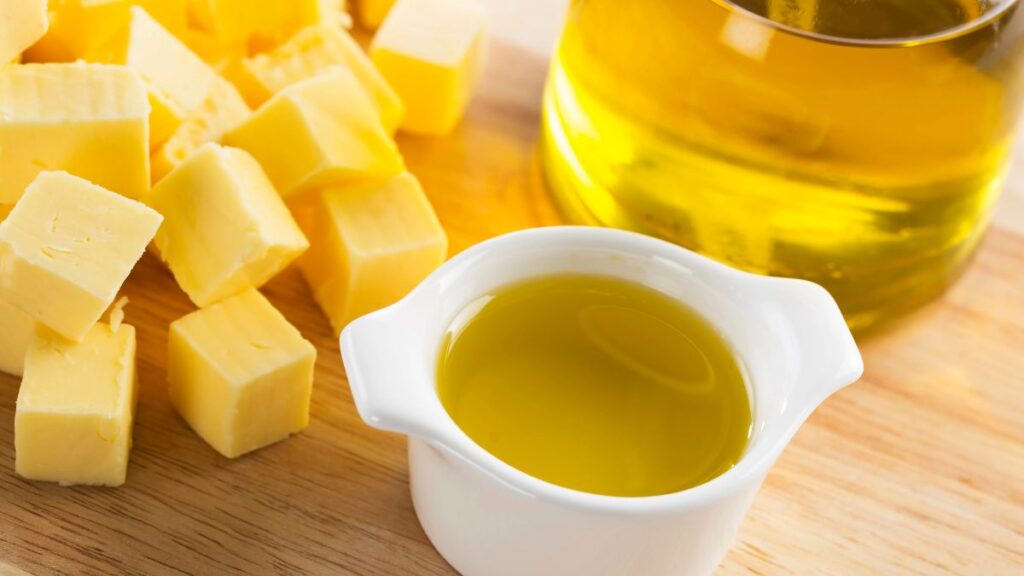
Butter is high in saturated fats, raising your LDL cholesterol levels and contributing to heart disease over time. While it can add flavor and texture to many dishes, using excess butter can negatively affect your cholesterol levels.
They are limiting butter consumption and choosing healthier fat sources like olive oil or avocado when cooking is best. Small amounts of butter here and there won’t do major harm, but using it frequently can impact heart health. Try using plant-based spreads as alternatives to cut back on saturated fat intake.
Olive Oil (Healthy Choice)

Olive oil is a fantastic source of monounsaturated fats, which help increase HDL cholesterol and lower LDL cholesterol. This makes it one of the healthiest oils you can use for cooking, drizzling on salads, or dipping bread. It’s also packed with antioxidants, which support heart health and reduce inflammation.
Swapping out butter or vegetable oils for olive oil in your daily cooking can make a big difference in your cholesterol levels. It’s a simple change that promotes better heart health without sacrificing flavor. For the best results, opt for extra virgin olive oil, which is the least processed.
Fried Foods (Unhealthy Choice)

Fried foods, like fried chicken or French fries, are typically cooked in oils high in unhealthy trans fats and saturated fats. These fats raise your LDL cholesterol, increasing the risk of heart disease and stroke over time. Eating fried foods regularly can also contribute to weight gain and poor heart health.
Although fried foods are tasty, it’s important to limit them in your diet to protect your cholesterol levels. Consider healthier cooking methods, like baking or grilling, to enjoy your favorite foods without the negative cholesterol impact. Reducing your intake of fried foods is key to improving heart health.
Nuts (Healthy Choice)
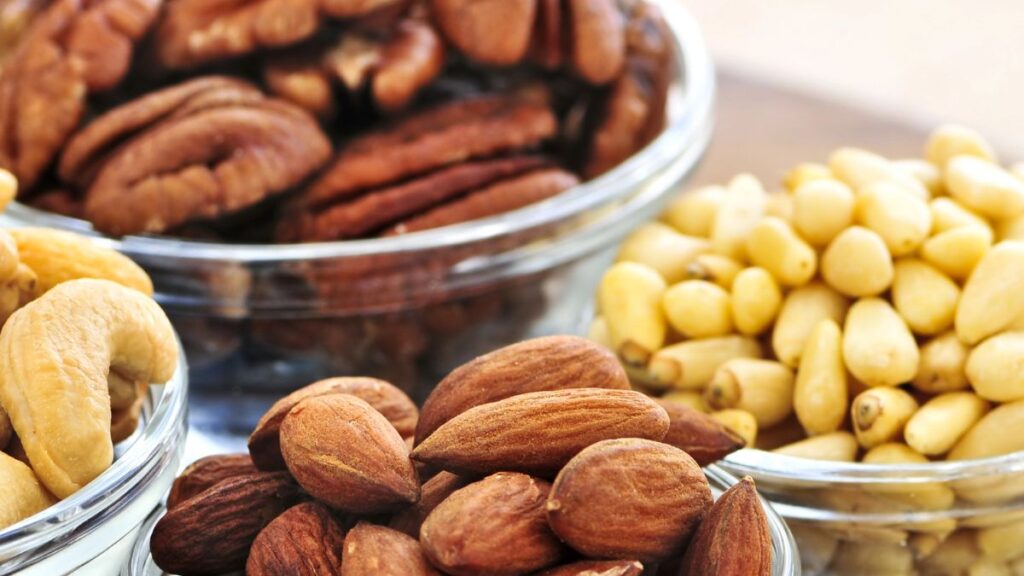
Nuts, such as almonds, walnuts, and cashews, are rich in unsaturated fats that help lower LDL cholesterol while boosting HDL cholesterol. They also contain fiber, which supports heart health and helps reduce overall cholesterol levels. Nuts are a convenient and tasty snack that you can enjoy on their own or added to salads, yogurt, or oatmeal.
Just be mindful of portion sizes, as nuts are calorie-dense. Including a handful of nuts in your daily diet can have a significant positive impact on your heart health. They are a great alternative to unhealthy snacks that are high in saturated fats.
Processed Meats (Unhealthy Choice)

Processed meats, like sausages, bacon, and hot dogs, are high in saturated fats and cholesterol. Consuming these foods regularly can raise your LDL cholesterol and increase your risk of heart disease. Processed meats often contain added preservatives and sodium, which can further harm your heart health.
While they may be convenient, it’s important to limit processed meats in your diet. Try opting for leaner protein sources like chicken, turkey, or plant-based options to reduce your cholesterol intake. Minimizing processed meat consumption is a key step toward improving your heart health.
Oats (Healthy Choice)
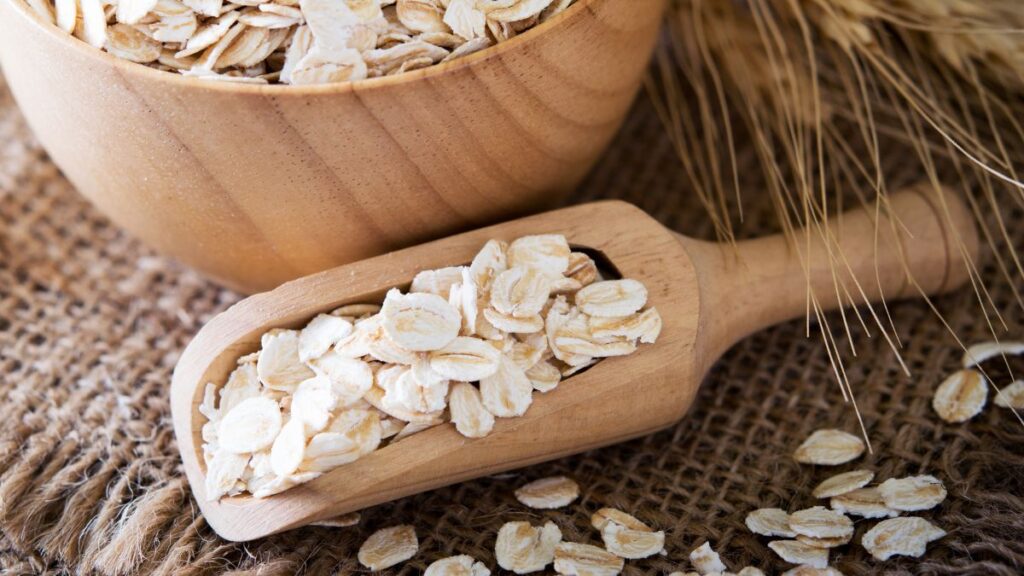
Oats are rich in soluble fiber, which helps reduce LDL cholesterol by binding to cholesterol particles and removing them from the body. Eating a bowl of oatmeal for breakfast is a simple and effective way to lower your cholesterol levels over time. Oats can also be used in baking or added to smoothies for an extra fiber boost.
Soluble fiber not only improves cholesterol but also supports digestive health and helps control blood sugar levels. Adding oats to your diet is a delicious way to promote heart health without making drastic changes. It’s an affordable and versatile food for better cholesterol management.
Cheese (Unhealthy Choice)
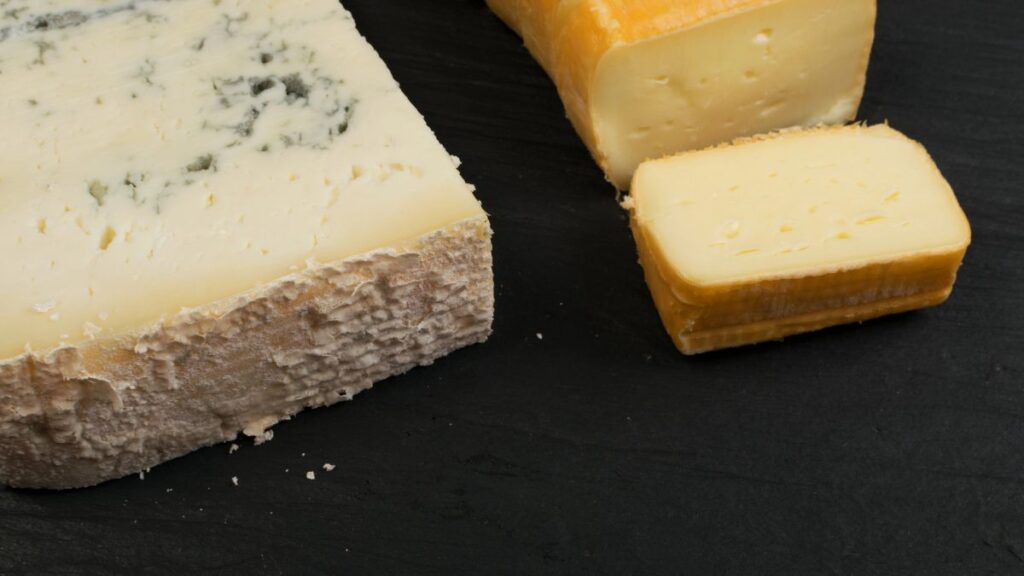
Cheese is delicious but often high in saturated fats, which can raise LDL cholesterol when eaten in large amounts. While cheese can be enjoyed in moderation, overconsumption can negatively affect heart health.
It’s best to limit your intake of high-fat cheeses and opt for lower-fat varieties or plant-based alternatives. Using cheese as a topping rather than the main component of a dish can help reduce your cholesterol intake. Enjoying cheese in small portions allows you to savor the flavor without harming your cholesterol levels.
Fatty Fish (Healthy Choice)

Fatty fish, such as salmon, mackerel, and sardines, are rich in omega-3 fatty acids that help lower LDL cholesterol and raise HDL cholesterol. These healthy fats also reduce inflammation and promote overall heart health. Eating fatty fish two to three times a week is a great way to incorporate beneficial fats into your diet.
You can bake, grill, or steam fish to retain its nutritional value without adding unhealthy fats. Omega-3s are essential for maintaining a healthy heart, and fish is one of the best sources. It’s a flavorful and heart-friendly addition to any diet.
Commercial Baked Goods (Unhealthy Choice)

Commercial baked goods like cookies, cakes, and pastries often contain unhealthy trans fats and high levels of sugar. These ingredients raise LDL cholesterol and contribute to heart disease over time. While it’s okay to indulge in these treats occasionally, making them a regular part of your diet can have long-term negative effects on your cholesterol.
If you enjoy baking, try making your own treats with healthier fats and less sugar. Opting for homemade versions allows you to control the ingredients and make healthier choices. Reducing your intake of store-bought baked goods is a step toward better cholesterol management.
Dark Chocolate (Healthy Choice)
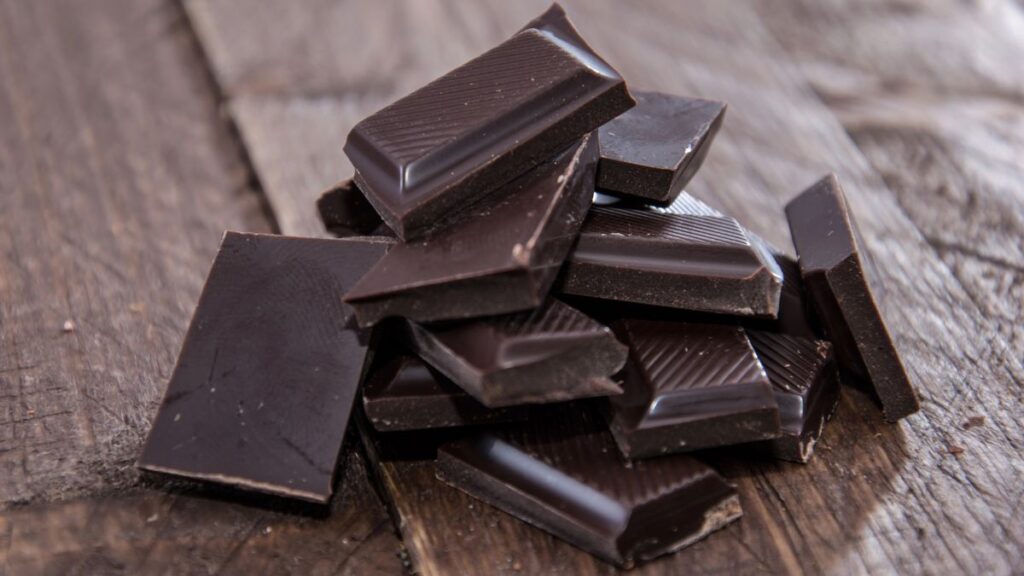
Dark chocolate, especially varieties that are at least 70% cocoa, contains antioxidants and heart-healthy fats that can improve cholesterol levels. The flavonoids in dark chocolate help increase HDL cholesterol while lowering LDL cholesterol. Eating dark chocolate in moderation can be a tasty way to support heart health.
Just be mindful of the sugar content, as some dark chocolates may still be high in sugar. Opt for high-quality dark chocolate with minimal added ingredients to get the most health benefits. Enjoying a small piece of dark chocolate as a treat can satisfy your sweet tooth while supporting your heart.
Red Meat (Unhealthy Choice)

Red meat, especially fatty cuts like ribeye or ground beef, is high in saturated fats and cholesterol. Consuming too much red meat can raise your LDL cholesterol and increase your risk of heart disease. While it’s okay to enjoy red meat occasionally, it’s best to limit how often you eat it and opt for leaner cuts. ]
You can also explore plant-based protein options to reduce your reliance on red meat. Moderating your red meat intake is a crucial step in managing your cholesterol levels. Try incorporating more vegetables, legumes, and whole grains into your meals to balance your diet.
Flaxseeds (Healthy Choice)
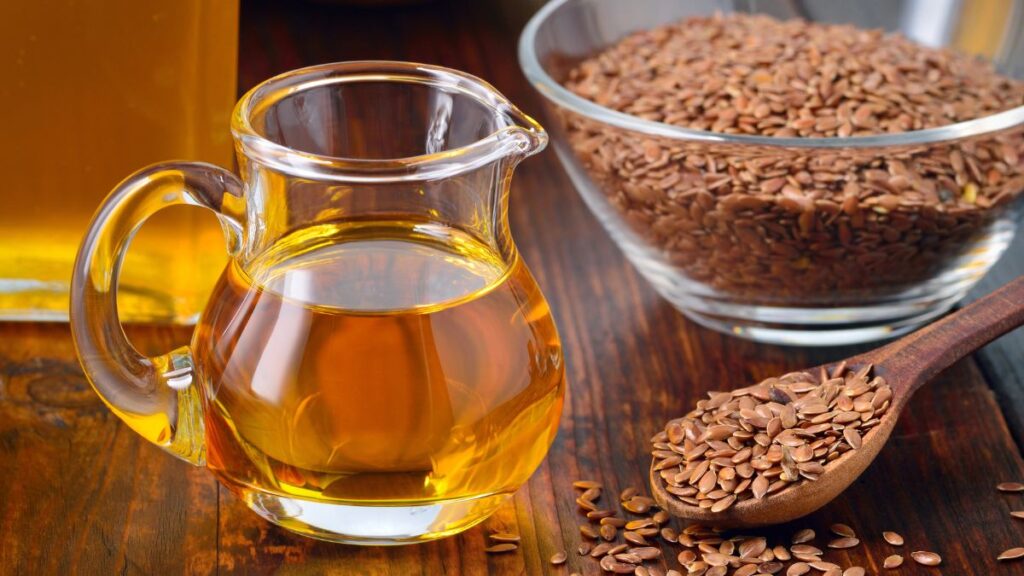
Flaxseeds are a powerhouse of omega-3 fatty acids, fiber, and lignans, which all contribute to lowering LDL cholesterol. These tiny seeds can be added to smoothies, oatmeal, yogurt, or baked goods for an easy way to boost your heart health.
Flaxseeds are also great for improving digestion and regulating blood sugar levels, making them a versatile and healthy addition to your diet. To get the most benefit, it’s best to consume ground flaxseeds, as whole seeds may pass through the digestive system without being fully absorbed. Including flaxseeds in your daily routine is an easy way to promote healthy cholesterol levels.
Ice Cream (Unhealthy Choice)

Ice cream is a high-fat, high-sugar dessert that can contribute to raised LDL cholesterol levels when eaten frequently. While it’s a popular treat, its high content of saturated fats and added sugars makes it a poor choice for heart health.
If you’re craving something sweet, try opting for frozen yogurt or sorbet, which often contain less fat. Limiting your ice cream intake and choosing healthier dessert options can help keep your cholesterol in check. Moderation is key when enjoying indulgent foods like ice cream.
Eggs (Healthy Choice)
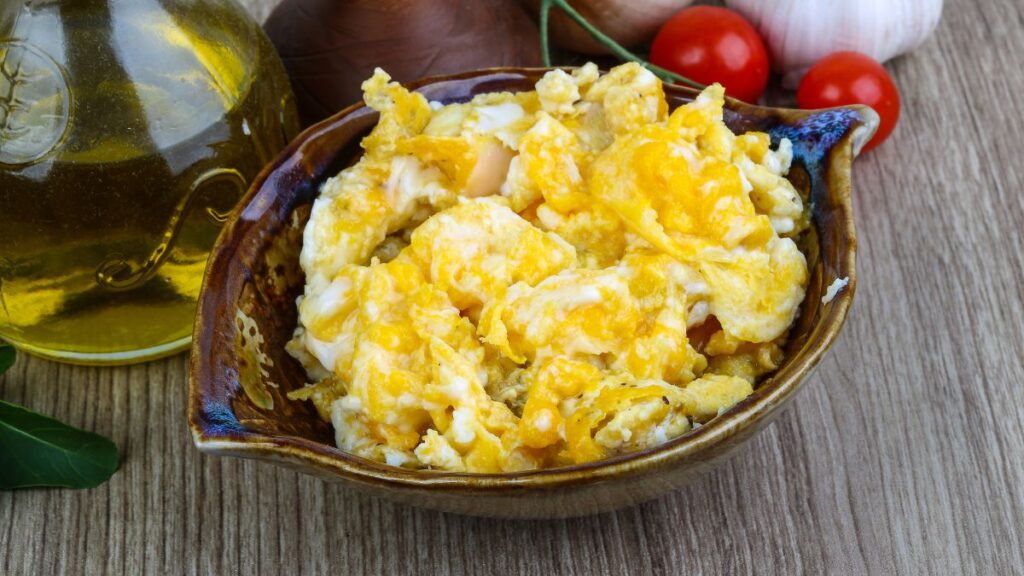
Eggs have long been debated due to their cholesterol content, but recent studies show that they can be part of a heart-healthy diet. While eggs do contain cholesterol, they are also rich in protein, vitamins, and healthy fats that don’t raise cholesterol levels in most people.
Eating eggs in moderation, such as one egg per day, is generally considered safe and beneficial for overall health. You can enjoy eggs boiled, scrambled, or in various dishes without significantly impacting your cholesterol. Including eggs in your diet can provide essential nutrients while supporting heart health.
15 Places Where You’re Expected to Tip—But You Really Don’t Have To

Tipping has become a widespread practice in many industries, with the expectation that you’ll leave a little extra for good service. However, not every situation truly warrants a tip, even if you feel pressured to give one.
15 Places Where You’re Expected to Tip—But You Really Don’t Have To
15 Most Annoying Habits of American Tourists When Dining Abroad

Traveling abroad is an exciting adventure, and dining in new places is a big part of the experience. However, some common behaviors by American tourists can be frustrating for locals and affect the dining experience.
15 Most Annoying Habits of American Tourists When Dining Abroad




